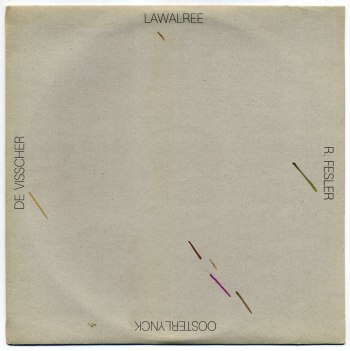Including Walloon- and Flemish-based composers from the Brussels area (Bierges, Archennes, Leuven), this double LP set, the sole compilation to appear on Lawalrée’s Walrus Records, is also the most experimental release on the label. Dominique Lawalrée‘s own contribution, a static, elongated electric organ drone punctuated with pointillistic electronic ornaments, is more radical than other works I posted previously. The only work on this disc to make use of musique concrète sounds, extensive sound processing and studio treatment, Baudouin Oosterlynck‘s disturbing, S&M soundtrack Suite for a Bondage Room was included in the 4-CD box-set retrospective on Metaphon in 2008. The minimalist piano music of With Hidden Noise (after Marcel Duchamp) was recorded by Eric de Visscher when he was only 23-years old and is his first record release. A composer, music theorist and John Cage specialist, de Visscher became director of IRCAM in 1997 until 2003 when he became director of Musée de la Musique in Paris. Born in 1938, Robert Fesler may be the oldest composer on this compilation, yet his music sounds like contemporary electronica. Fesler was an electronic engineer who built his own synthesizer, in this case the “RPF 756”.
01 Dominique Lawalrée Still Life (18:55)
02 Baudouin Oosterlynck Suite for a Bondage Room (21:42)
03 Eric De Visscher With Hidden Noise (19:00)
04 Robert Fesler Tristesse (12:20)
05 Robert Fesler Le Temps des Poissons Touche à sa Fin (9:50)
Total time 1h 21mns
2xLP released by Walrus, ref. WLS 12 & 13, Brussels, Belgium, 1984
* *
*

























